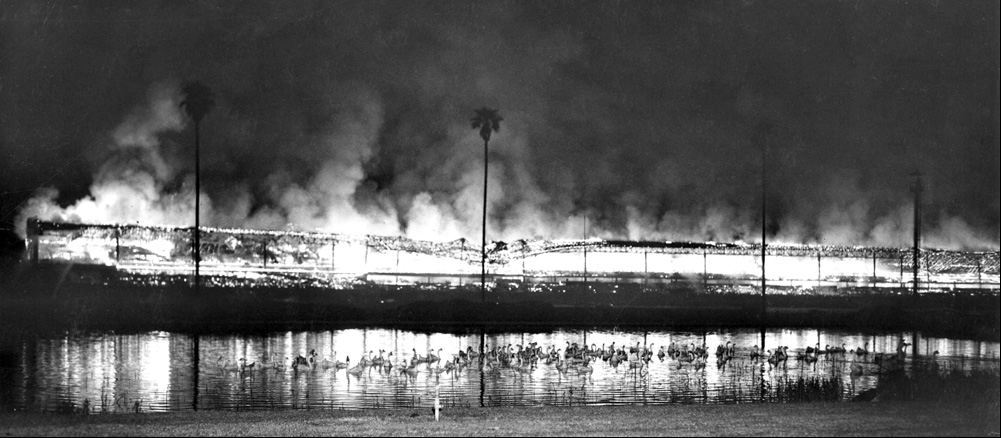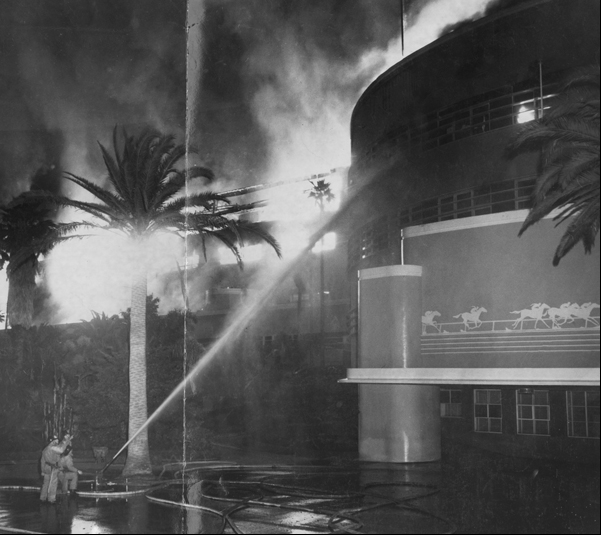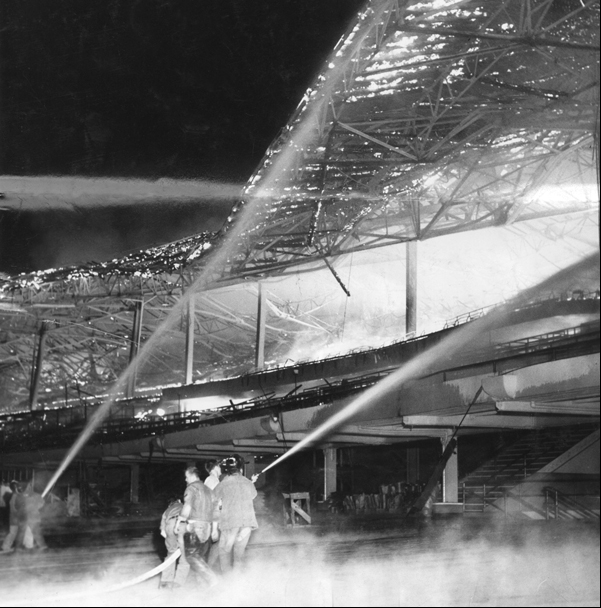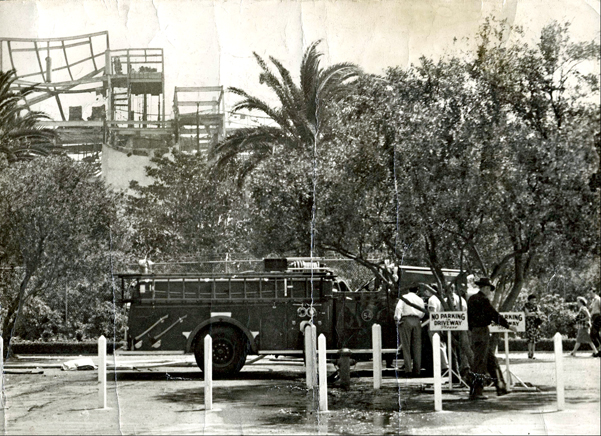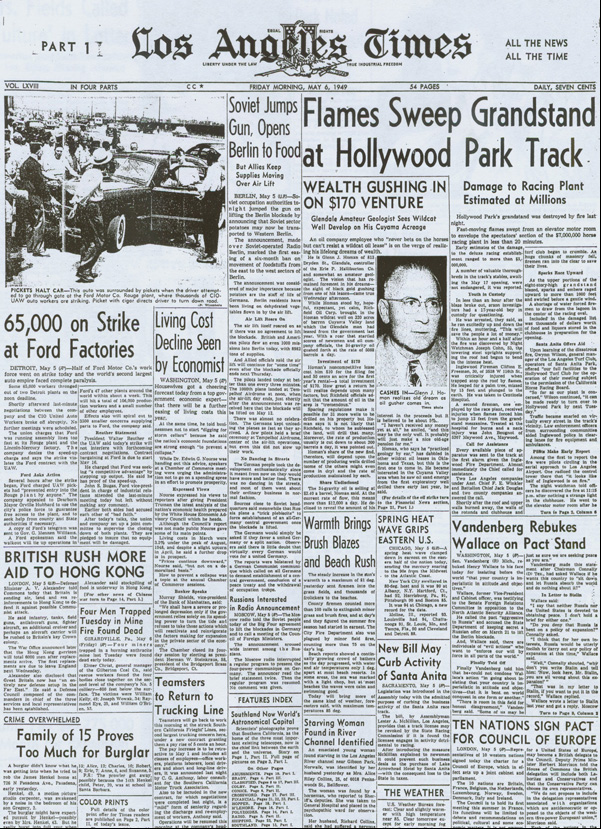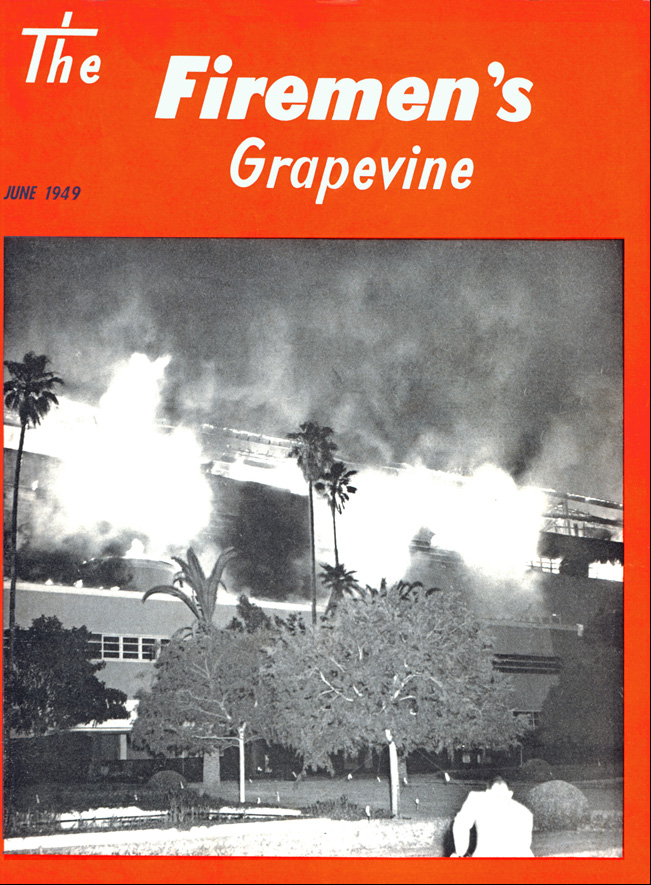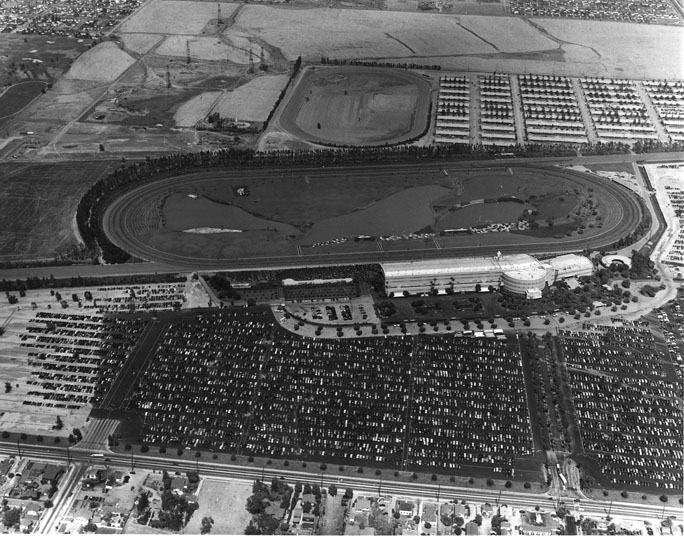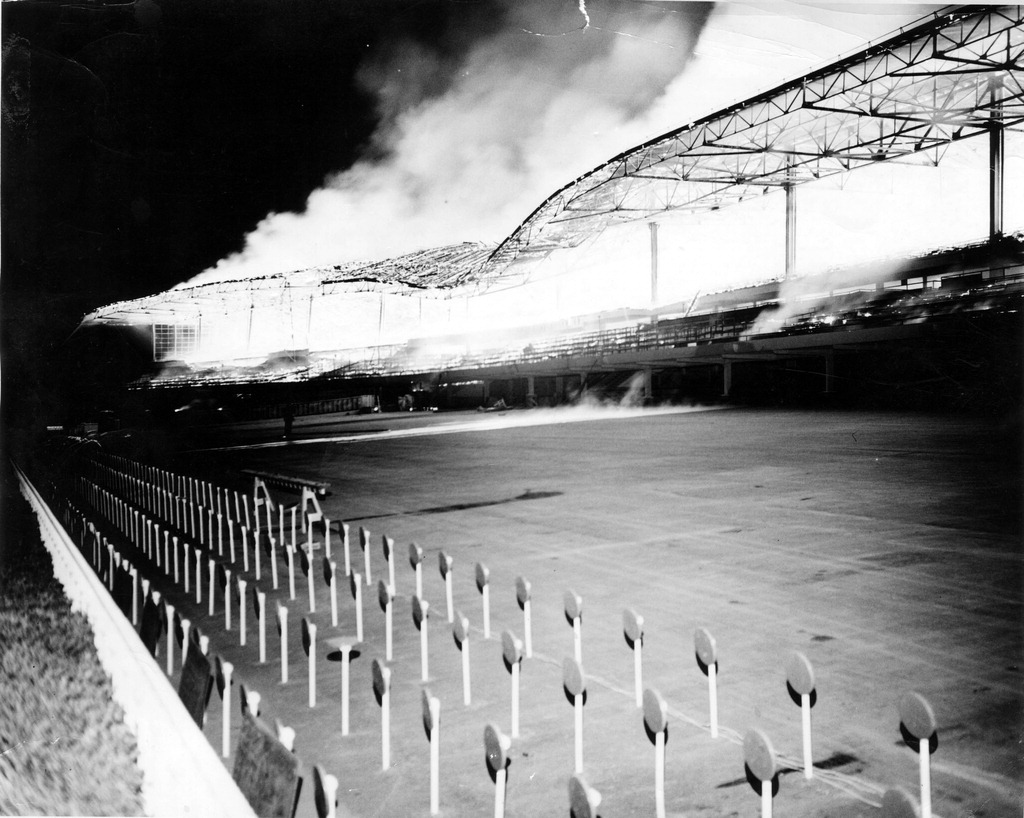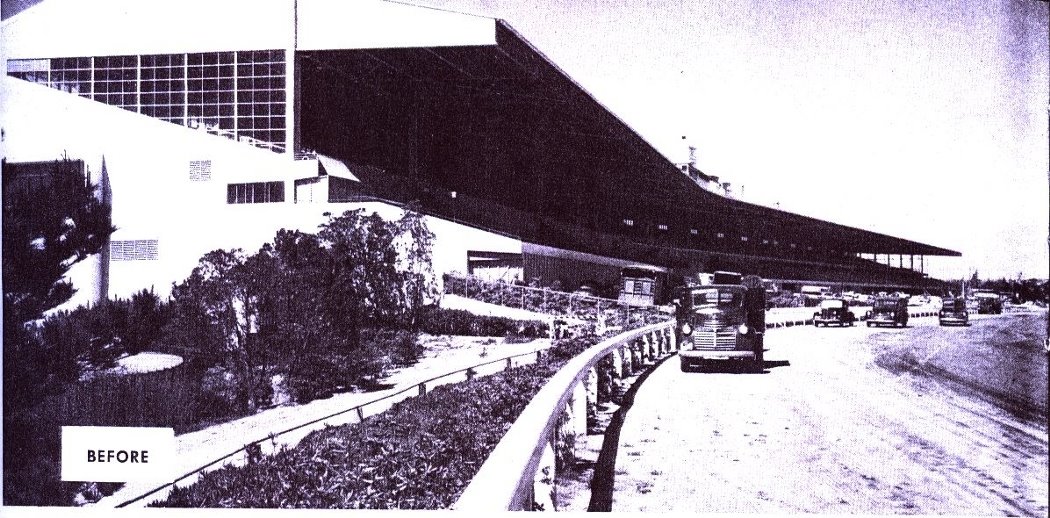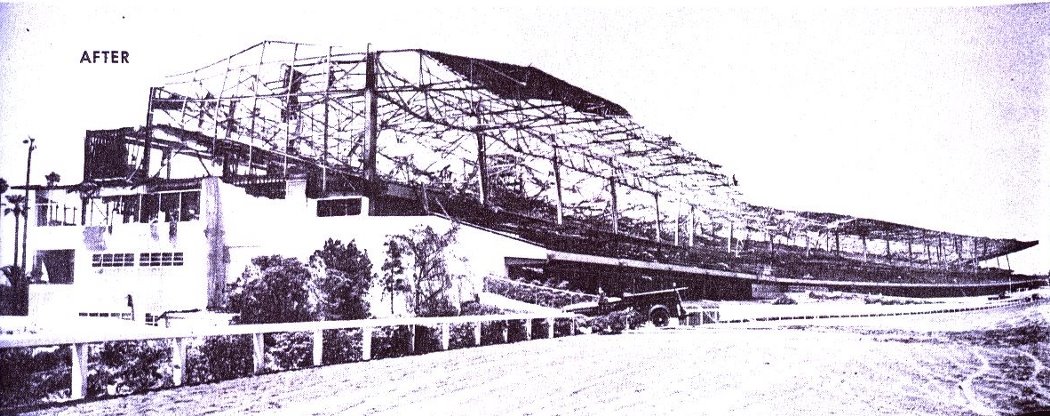The night that fire destroyed Hollywood Park
By Sam Gnerre on May 20, 2009 4:48 PM
This 1946 photo shows the Hollywood Park racetrack as it existed before the fire. Note the stables at the upper right, the infield lakes, and the oil derricks at the upper left of the photo.
Hollywood Park in Inglewood eventually will close for good to make way for a large development.
Hollywood Park Tomorrow, as the proposal is known, will consist of a walkable, mixed-use development of homes, offices and stores. It will include a 25-acre park system complete with two lakes and a waterfall between them intended to evoke the racetrack's infield and double as a method of cleaning urban runoff.
Almost 3,000 homes, designed to house 8,000 to 10,000 residents of varying income levels, are planned.
The more than 600,000 square feet of retail space envisioned will consist not of big-box stores, but a 1,200-foot-long outdoor mall with movie theaters. That main street is anchored by civic plazas at either end, intended to provide a sense of place for residents and visitors.
When the racetrack closed in 1949, it was for a different reason: a massive $5-million-dollar fire.
It began in the clubhouse shortly after 11:00 p.m. on the night of May 5, 1949, less than two weeks before the opening of the track's spring racing session. The fire quickly became a conflagration, rapidly spreading through the grandstand and the Turf Club.
According to the Associated Press account that appeared in the Daily Breeze, thousands of spectators watched the flames shoot high into the air, snarling traffic in the area. Firefighters from the Inglewood and Los Angeles fire departments at one point were sent running for their lives when the roof and upper walls burned away, and the masonry walls began to crumble. They battled the blaze for three hours before bringing it under control, but the structures were a total loss.
Fortunately, the horses weren't harmed because the stables were located about a half-mile away from the grandstand. The swans and geese that congregated in the infield lake also were spared; the AP reported that "the fowl huddled safely in the little lakes in the infield" during the blaze.
Santa Anita Park stepped in to rescue the 1949 horse racing season from disaster by offering its facilities, where the spring meeting began right on time on May 17, 1949.
No cause was given for the blaze. The track was covered by insurance, and quickly began the rebuilding process. Slightly more than a year later, June 27, 1950, Hollywood Park reopened.
This Associated Press photo appeared on the front page of the Daily Breeze on May 6, 1949, the morning after the fire. For more pictures of the fire, visit Mary Forney's blog:
http://maryforney.blogspot.com/2008/11/hollywood-park-and-great-fire-of-1949.html |
